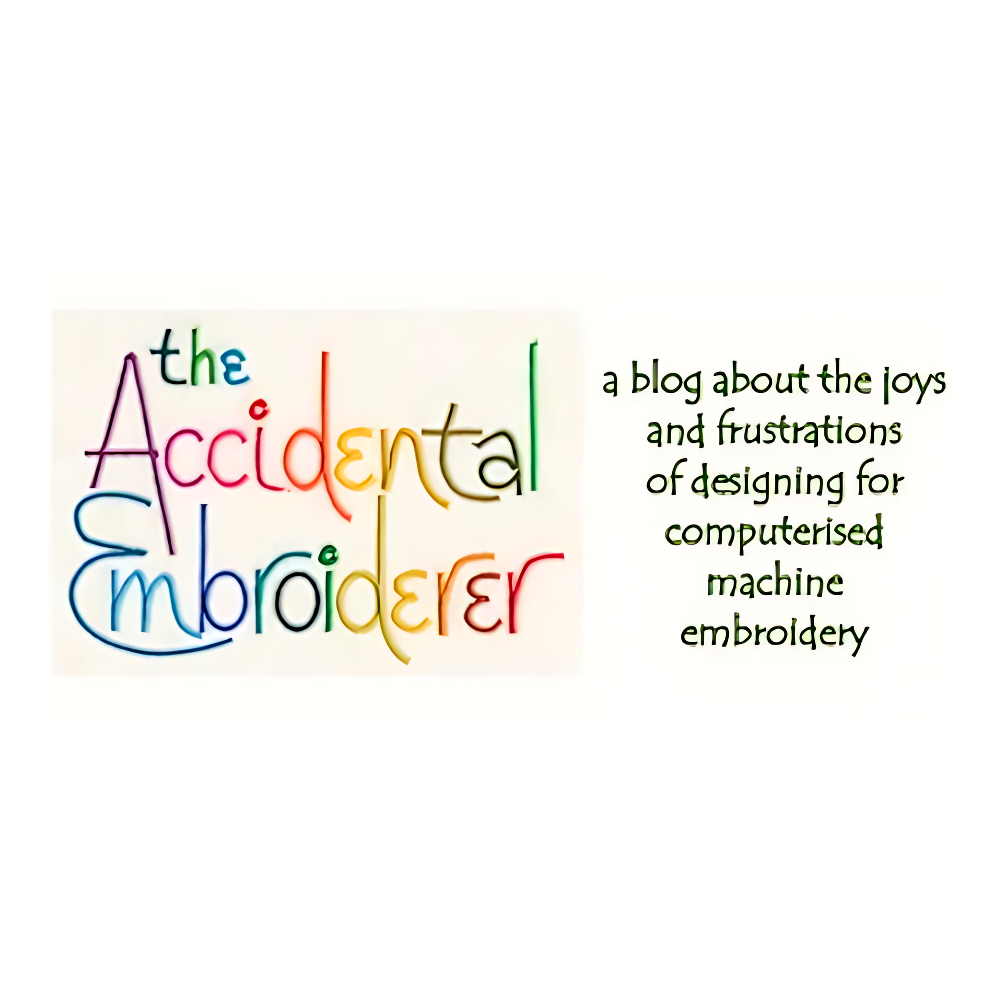(although I really must stop calling these Charley Harper designs, as by now they bear very little resemblance to his style). A few weeks ago I did a collection of 8 applique birds in (roughly) a Charley Harper style. But then I thought that as he would never draw a bird or an animal without a background, I shouldn’t either. The simplest way to add a background would be to set each bird against a leafy background, and then stack them on top of each other to make a long, thin “bell-pull” panel
It took me some time to decide how to treat the leaves. Usually in a design like this I’d use at least two or three different colours in each leaf, but these were going to be such large designs that that would have taken a huge amount of time to digitise, and the “stems” of the leaves would have to be made very thick to accommodate all the lines of running threads going through them. So I settled for dividing up the foliage into patches, doing each patch of leaves in a different shade of green, and using 4 greens in each design.
Here is one, done on a background of roughly-painted fabric, just to give it a bit of texture and added interest. I like the way the patches of green have turned out – the leaves are interesting without being too intrusive.

One of the "Charley Harper" birds on a background of embroidered leaves
8 large, complicated panels like this took a LONG time to design and digitise, and as each panel is somewhere between 40 and 50 thousand stitches each, they took a long time to stitch out as well. But I’m beginning to get them done: one down, seven to go
